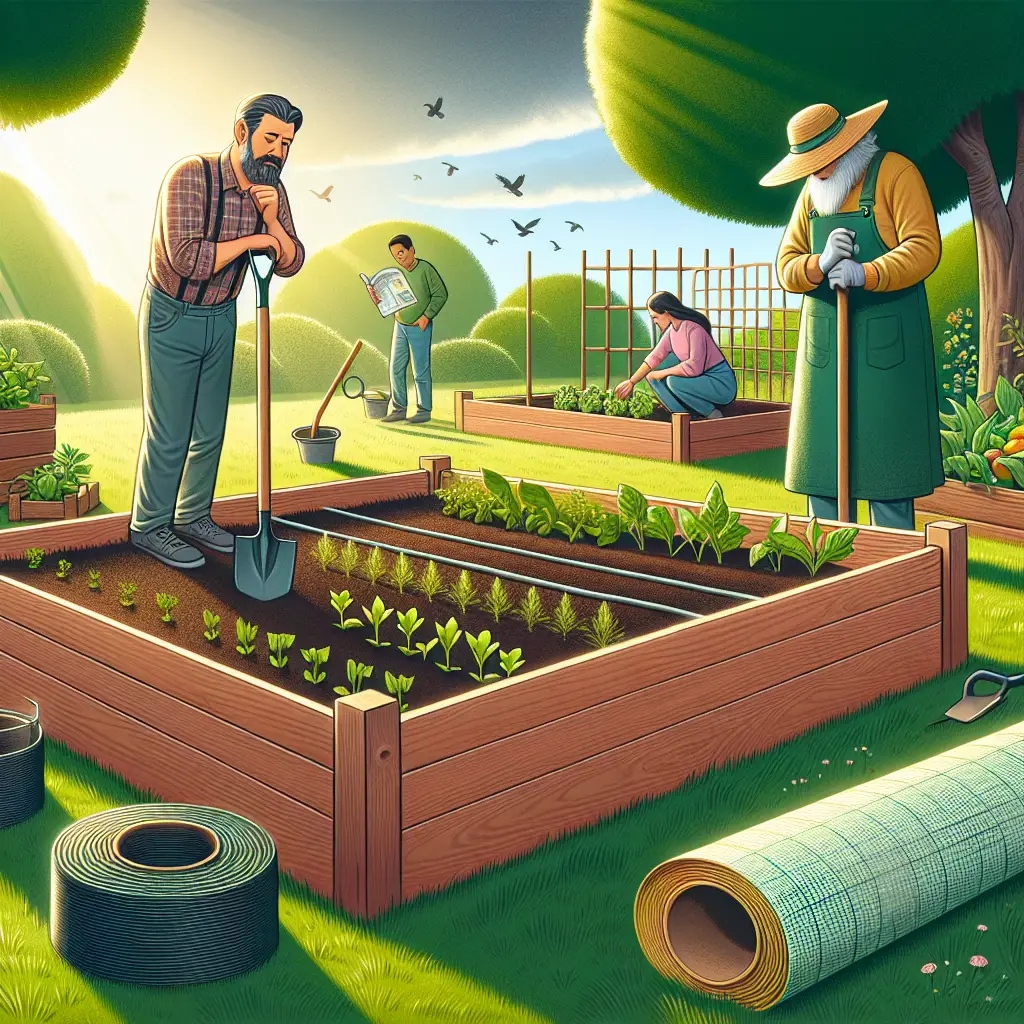Title: Do I Need a Liner for My Raised Garden Bed?
Introduction:
As a green-thumbed enthusiast looking to demystify the science of raised garden beds, you may have pondered whether adding a liner is a horticultural must-have or a needless addition. Fear not, for you are not alone in this root-deep conundrum. In today’s deep dive, we will explore the purpose of a liner, discuss its benefits and drawbacks, and provide you with the insights needed to cultivate your decision on whether to line or not to line. Let’s get our hands dirty!
Why Consider a Raised Garden Bed Liner?
The raised garden bed has soared in popularity among gardening circles, lauded for its ability to sidestep the challenges of poor native soil and offering neat solutions for controlling soil quality and drainage. A liner can play a significant role in this soil tale, serving a few critical purposes:
- Weed Barrier: A liner can act as a first defense against invasive weeds, which can otherwise sneak into your nurturing soil from the ground below and compete with your plants for resources.
- Pest Deterrent: Gardeners often encounter the frustration of burrowing pests. A robust liner can discourage critters such as gophers from turning your carrot patch into a midnight snack.
- Protection for Wood Beds: Wood, a popular material for raised garden beds, can decompose over time when in contact with moist soil. A liner can help prolong the life of your wooden framework by creating a moisture barrier.
The Potential Benefits of Garden Bed Liners
Before troweling through the internet’s abyss for the perfect liner, let’s un-earth the potential benefits:
- Water Conservation: Liners can help retain soil moisture, reducing the need for frequent watering. This is paramount in arid regions or during dry spells.
- Soil Integrity: By preventing soil from leaking out of gaps or cracks in your raised bed, a liner secures your soil mix keeping the nutrient composition consistent for your plants.
- Root Protection: A liner can act as a barrier between your soil and any potential toxins present in the construction materials of your bed.
Types of Liners to Consider
Certainly, not all liners are created equal. Common options include landscape fabric, plastic sheeting, and even cardboard. When choosing a liner, consider the following:
- Breathability: Landscape fabric, such as this Dewitt Sunbelt Ground Cover Weed Barrier, allows for water and air to penetrate, promoting healthy root growth.
- Durability: Heavy-duty plastics can be more durable, but it’s important to ensure they have perforations for drainage to prevent water logging.
When a Liner May not be Necessary
Not all raised garden scenarios require a liner. Consider skipping it if:
- Your raised bed is over native soil rich in organic material – simply loosening the soil at the bottom can improve drainage and root growth.
- You’re growing deep-rooted plants – they may require unrestricted growth beyond a liner’s depth.
- The bed is set on a surface that already provides a barrier, such as concrete.
Conclusion:
To line or not to line, that is indeed the question. The decision to use a liner in your raised garden bed hinges on a multitude of factors including your site’s conditions, the materials of your bed, and your personal gardening goals. Liners can offer distinct advantages, from thwarting weeds to conserving moisture, yet they may not be essential for every garden. Weighing the pros and cons in the context of your own green domain will yield the best choice for your aspiring Eden.
Before you plant your next seed or harvest your next home-grown tomato, remember that the key to a flourishing garden often lies beneath the surface, in the foundational decisions you make for your botanical charges. May your choices root deep and your gardens prosper!
Reflect on your garden’s unique conditions and choose wisely – sometimes the best choices are those tailored to the natural tapestry of your backyard landscape.
Additional Resources:
For more guidance on creating the ideal raised garden bed setup, I recommend delving into resources provided by the University of California’s Master Gardener Program which offers in-depth articles and local advice.
Another excellent source for garden building materials and ideas is The Old Farmer’s Almanac, a tried and true resource trusted by gardeners for centuries.
As you cultivate your knowledge and sow the seeds of your garden, may your efforts blossom into an oasis of green tranquility. Happy gardening!

